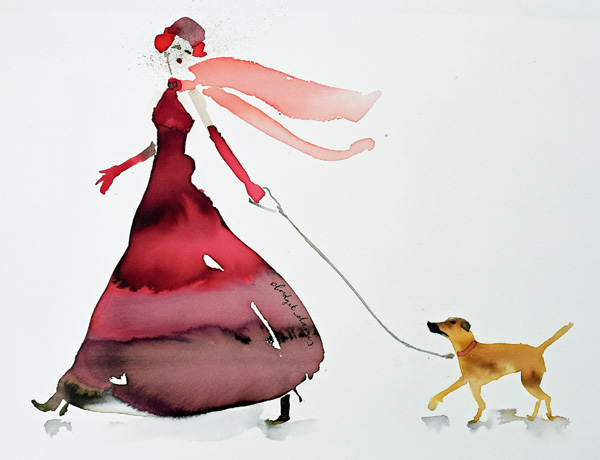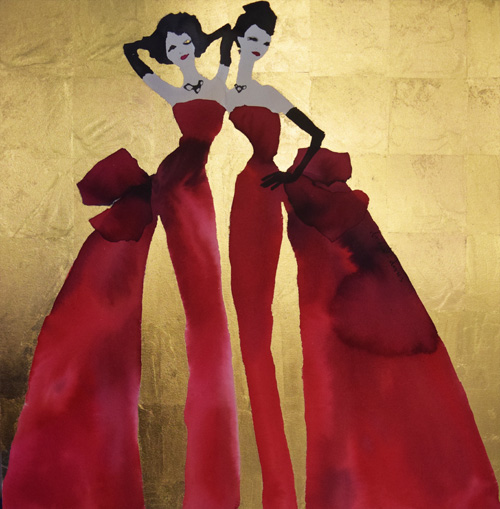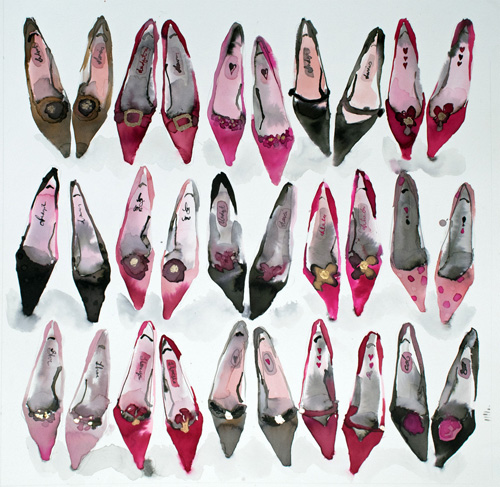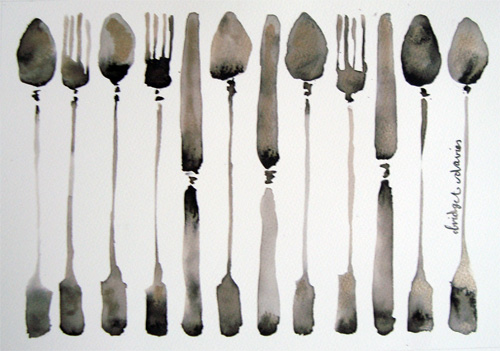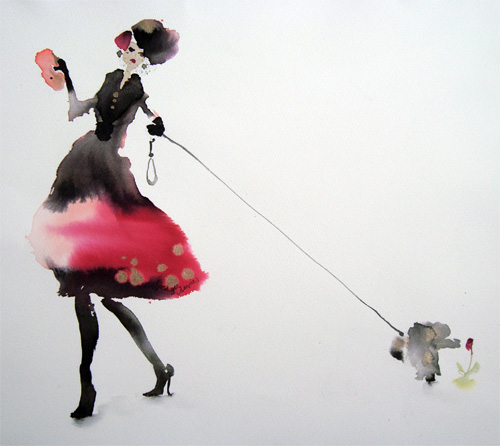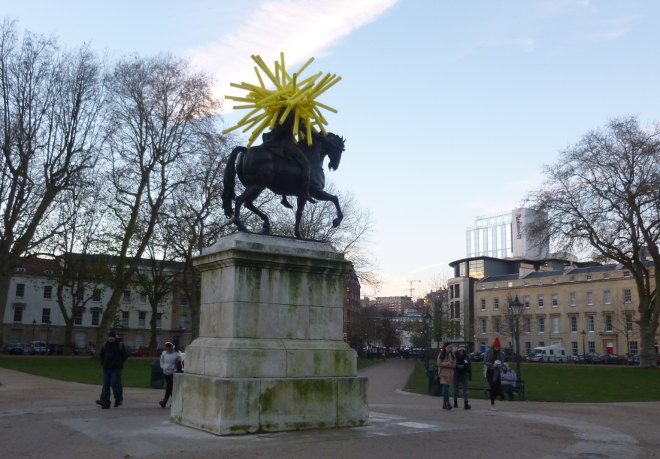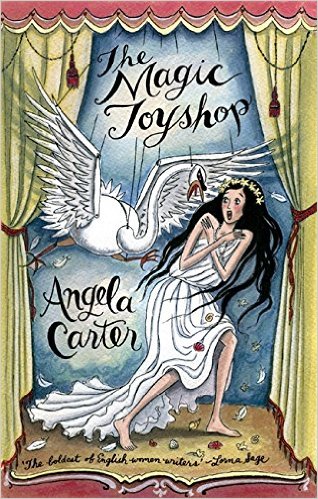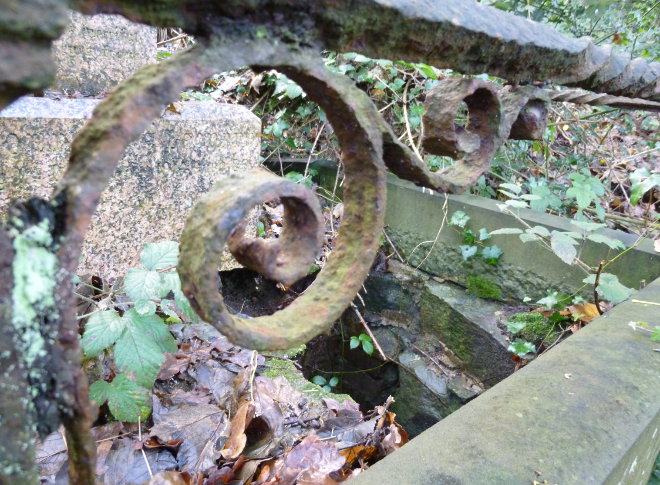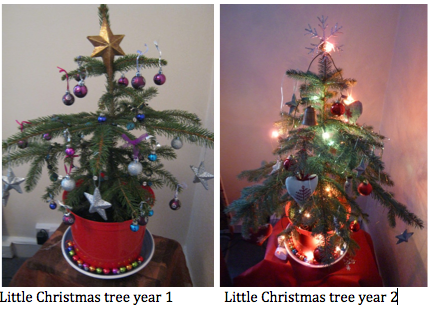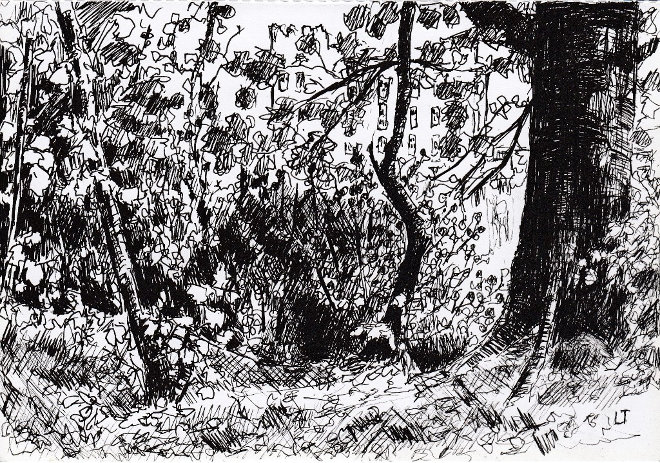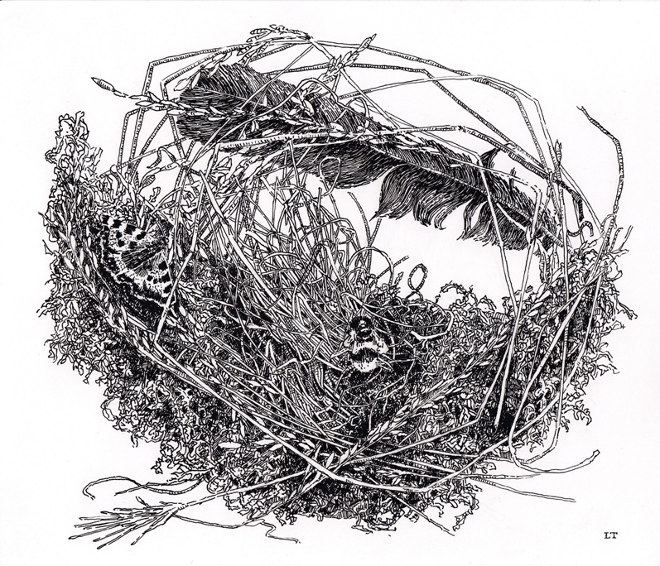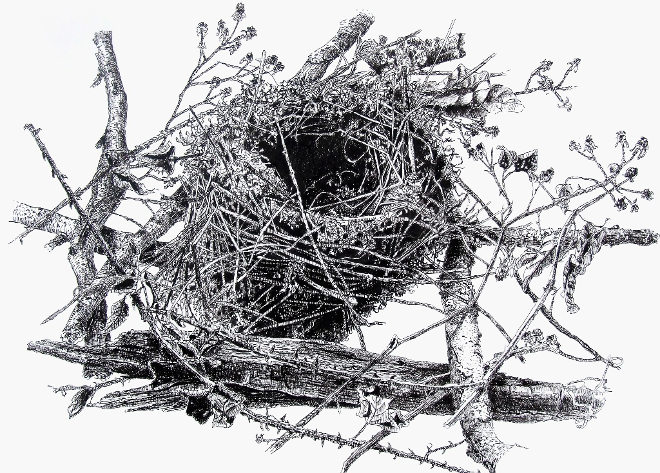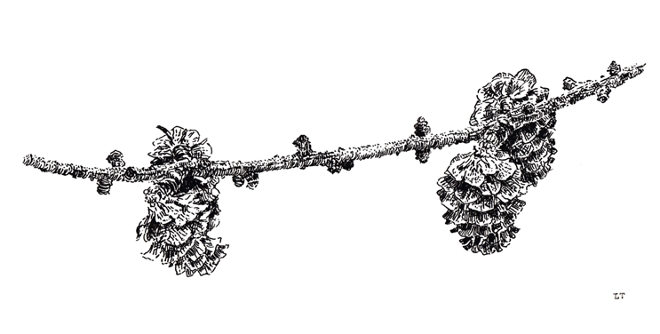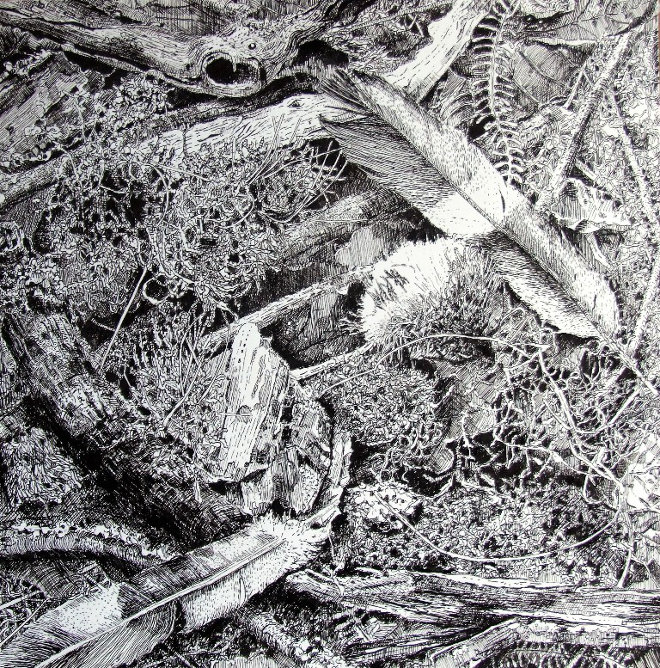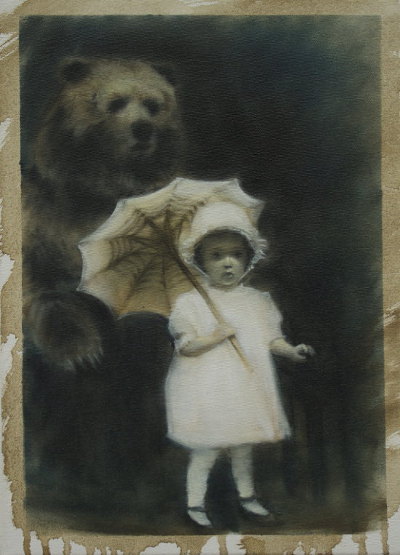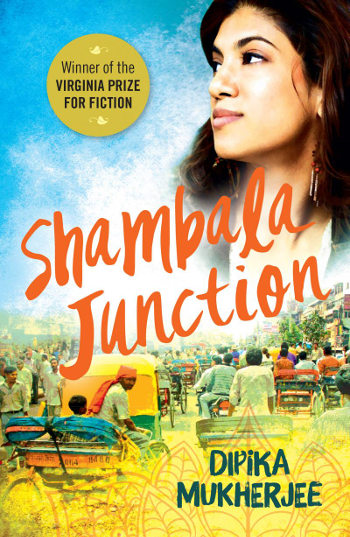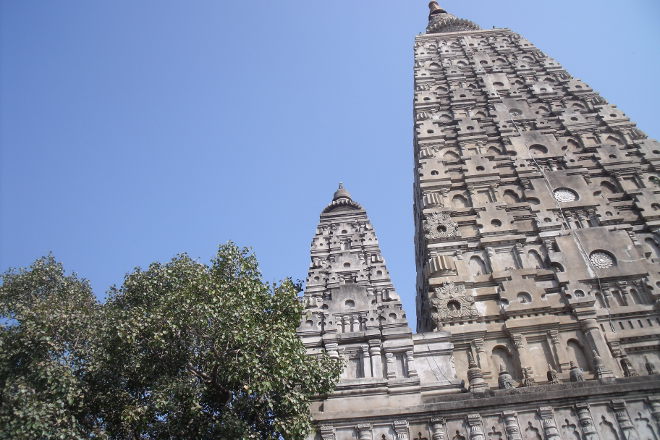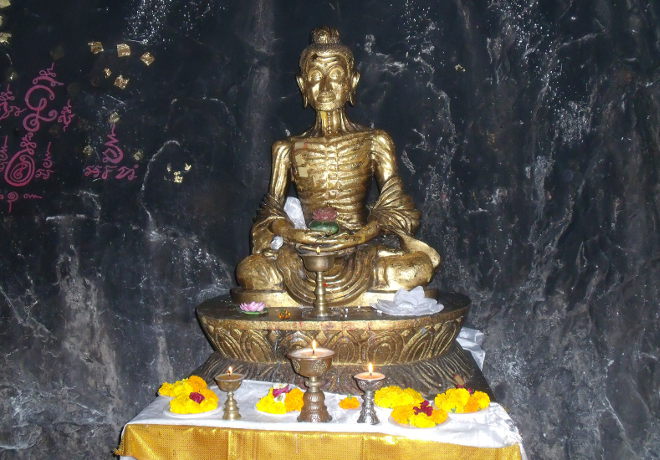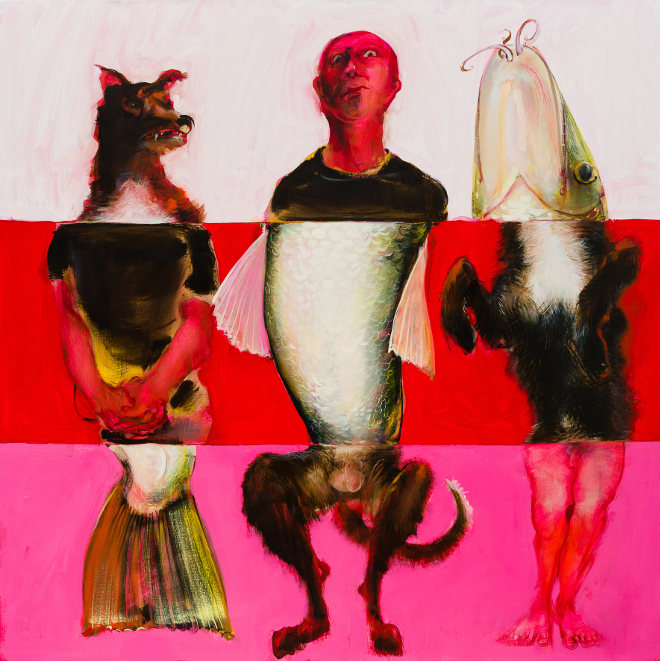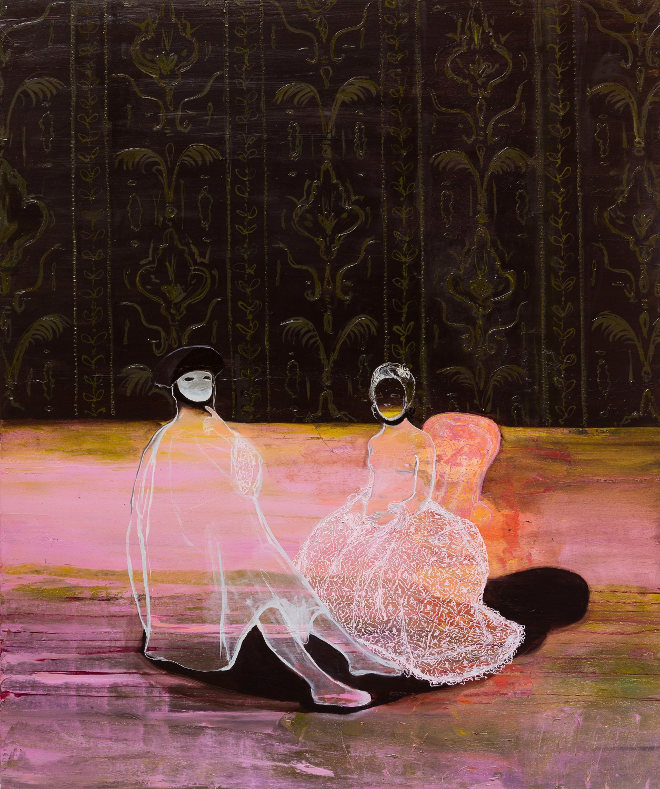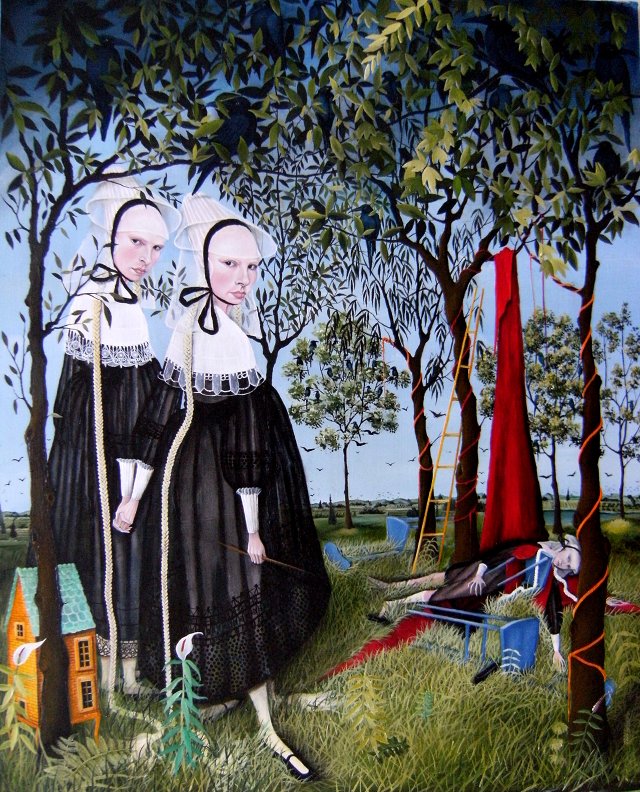With a swish of ink, artist Bridget Davies conjures up the very best dressed characters you’re likely to see. From ladies who gather at posh parties to sneer about their competition, to gals striding out with their perfect pooches in tow, her scenes capture glimpses of a bygone era, when waists were nipped, hair coiffed and heels precariously high. Looking at her work makes me think of a jazz club in a Stephen Poliakoff play or the glamorous soirees in Winifred Watson’s Miss Pettigrew Lives for a Day.
For Bridget, the love of drawing began early.
“I do believe it began when I was a child, and I liked to make paper dolls, all with an array of outfits to fit any occasion,” she says.
She began to take the potential of fashion illustration as an art form when a visiting lecturer who worked in this field led part of her fashion degree.
“I’ve always loved drawing the human figure, both of males and females, but this was different,” she says. “I developed a strong fascination for fashion illustration and drawing. I’m not sure why… maybe it is a prolific blend of the different elements that come together, to produce a successful painting; competent observational skills and draftsmanship, good graphic awareness, and the playful playful, flirtatious narrative.”
Bridget has also always loved illustrations from the Forties and Fifties. “I’m influenced enormously by the elegant and beautiful fashion drawings by illustrators of this period, as well as contemporary fashion artists and illustrators working today.”
To me, Bridget’s images often resemble stills from a film, mid-way through some dramatic episode.
“I use a slightly voyeuristic approach, as a fragment of a stranger’s conversation or passing comment made by a lover can be the catalyst for a whole series of ideas,” she confesses. “Combining with ideas from literature and conversation, I use the genre of fashion painting to create scenarios and characters and, with what I can best describe as visual anecdotes, telling secret stories of how I feel about my presence and desires.”
The central protagonists are usually female, she says, due to there being “an element of self-projection in my work.”
She also uses eveningwear and the glamour of her characters as a means to explore “the lengths we go to in order to impress and express attraction and desire.”
It makes sense, regarding all that, to see several of her artworks hanging in the kitchen of a character in the most recent series of Cold Feet! Though these examples are part of her Heavy Metal series, which succeeds in making cutlery and whisks look unexpectedly elegant! In case you want to follow suit, you can find the range at King and McGaw.
Drawing from another aspect of her degree, Bridget also loves to create stunning silk scarves that double up as works of art. “As my degree was in fashion and textiles, I’ve done a lot of work using fabrics,” she says. “I also wanted to work on a product that could be framed as I love seeing silk squares in a frame.”
Recent collaborations have included projects for The Shard in London, John Lewis, Anthropologie and Ikea. She says she enjoys collaborations for the opportunity to experience “a different way of working and problem solving. It’s sometimes a good change to have a direction dictated from an outside source, and can be quite challenging. Also, to be led in a direction that I may not have previously considered helps develop my artwork and ideas overall.”
Being a full time artist is an ongoing thrill. “I love creating. My brain is in a constant whirl. Ideas, ink, paint… It’s all so exciting, and I never feel jaded or fed up! I’m a very lucky girl.”
Find more of Bridget’s work at www.bridgetdaviesart.co.uk, as well as in London galleries such as Catharine Miller and Panter and Hall.
Are you an artist or do you know an artist who would like to be showcased on SkyLightRain.com? Get in touch at judydarley (at) iCloud.com. I’m also happy to receive reviews of books, exhibitions, theatre and film. To submit or suggest a review, please send an email to judydarley (at) iCloud.com.

